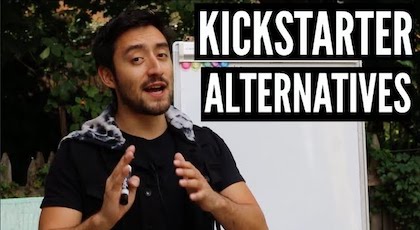Have you ever wondered what exactly peer-to-peer fundraising is?
And further, how can you use this fundraising strategy to raise funds for your nonprofit organization?
In this article, we’re exploring how peer-to-peer fundraising can go to work for you.
We’ll do a deep dive to compare peer-to-peer fundraising with traditional crowdfunding to explain all the differences between the two methods.
By the end of this post, you’ll discover the great ways nonprofits can use this fundraising method not only to get funding for your cause but to spread the word about your mission.
Was this video helpful for you?
Got a better understanding of peer-to-peer fundraising?
Get more information by subscribing to my Youtube channel. There, I’m always giving out killer advice for nonprofits like yours to empower your mission.
But for now, let’s dive in further to better understand exactly how peer-to-peer fundraising can go to work for your organization.
I’ve put together a new GUIDE that’s packed with science-backed nonprofit fundraising methods, resources, strategies, and killer marketing methods.
You should check it out if you want to get more donations and you want to fast-track the entire process.
Traditional Crowdfunding vs. Peer to Peer Fundraising
To truly understand what goes on with peer-to-peer fundraising, we must first understand how it differs from traditional crowdfunding.
With a traditional crowdfunding campaign, you have a couple of key elements:
- A platform to run the campaign on such as GoFundMe
- A request for donations — whether that be for a cause, an event, etc.
- A funding goal for how much money you want to raise
- A funding duration (usually 30-60 days) that determines the amount of time you have to reach your funding goal
With peer-to-peer fundraising, on the other hand, the elements are a little bit different — though overlapping similarities can make them difficult to distinguish.
For example, you still have a fundraising goal to bring your mission to life, and in many cases, you have a limited amount of time to do so as well.
Let’s say you are doing something like a Relay For Life to raise money for cancer. In this case, the campaign duration would be from when you started accepting donations until the end of the event.
The difference comes with the obligations for raising money.
With a traditional crowdfunding campaign, you are responsible for engaging your audience, getting it out there through marketing, and piquing interest.
This is done through social media ads, video content, images, content writing, and more.
You are the one who has to get people amped up about the cause in order to receive donations.
With peer-to-peer fundraising, you aren’t necessarily called to market the campaign, but rather to educate.
In a p2p setting, you have a bunch of people out there that are a part of your brand. This usually appears as a community of volunteers that are then going to their network and asking for donations.
That means that the success of a peer-to-peer fundraising campaign is highly dependent on your core supporter’s social network and their social capital.
Your community is raising funds on your behalf. They’re the ones that are actually doing the marketing and outreach for your campaign.
The money sourced from these core supporters is then pooled together and put back toward the greater mission of your organization.
What is Your Job as a p2p Fundraiser?
When it comes to identifying your role as the head of a peer-to-peer fundraising campaign, your job is to teach your core supporters how to market the cause.
With traditional crowdfunding for nonprofits, you are in total control of the messaging.
But with p2p fundraising, you’re relying on others. So you need to make sure that they are delivering compelling and correct information to receive donations.
This could take the form of:
- Providing them with flyers/handouts
- Giving sample text to send out in emails
- Suggestions/content for social media posts
- High-resolution images and videos that represent your cause for the distribution
You teach your volunteers how to use their network, then give them resources to distribute to that network.
It’s also a good idea to hold group informational sessions, webinars, and create a Facebook page to get your supporters rallied behind your cause and excited to go out there and promote the campaign.
Takeaways
The role you will take on as a P2P fundraising organizer is different than what you would with a traditional crowdfunding campaign.
As you set out to plan your fundraising strategy, ask yourself the following:
Do I want my role to be a marketer? Or do I want to take on more of a high-level leadership position that delegates responsibility through education?
Both methods of fundraising have proven extremely effective, so there’s no right choice here. You should identify your own strengths/weaknesses and make a choice from there.
Keep in mind that a p2p strategy usually works better for more established nonprofits that have the resources at their disposal for delegation.
Looking to learn more?
I have an awesome book that goes way more in-depth on everything you need to know about nonprofit crowdfunding: Non-Profit Crowdfunding Explained.
I also have an extremely helpful course that I’ve created to empower you to reach your organization’s goals, which you can check out here.
And if you’re looking for more personalized support, book a coaching call with me. I love helping nonprofits as yours grow!
I’ve put together a new GUIDE that’s packed with science-backed nonprofit fundraising methods, resources, strategies, and killer marketing methods.
You should check it out if you want to get more donations and you want to fast-track the entire process.
Good luck with your crowdfunding campaign. Here’s to making the world a better place!




